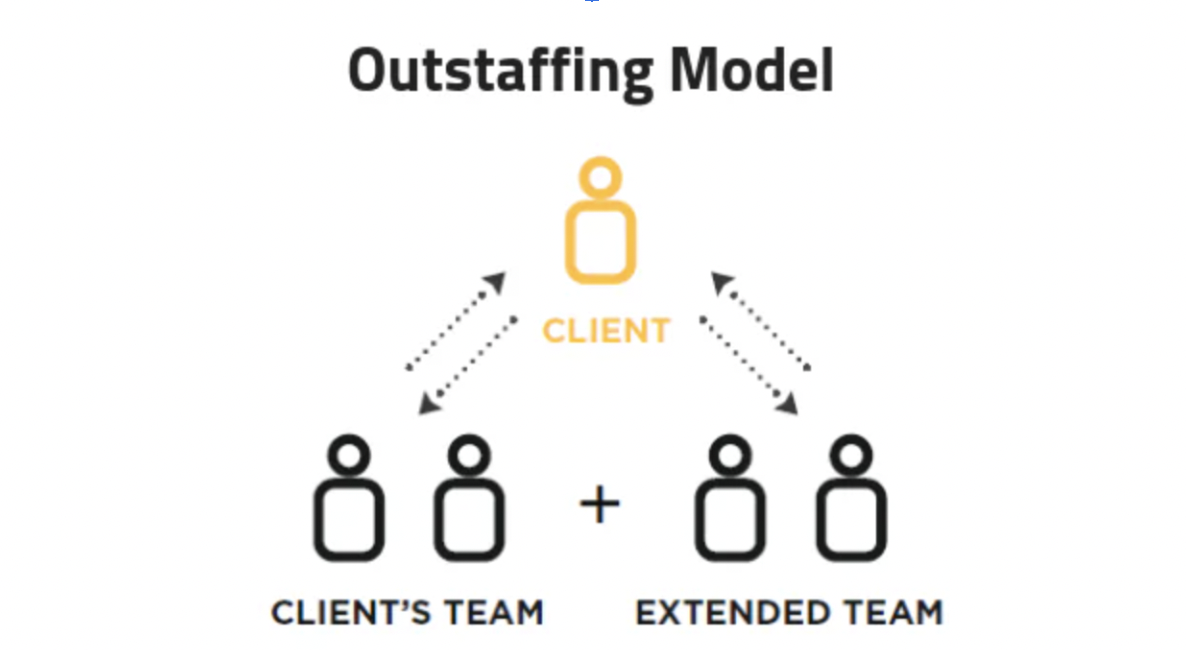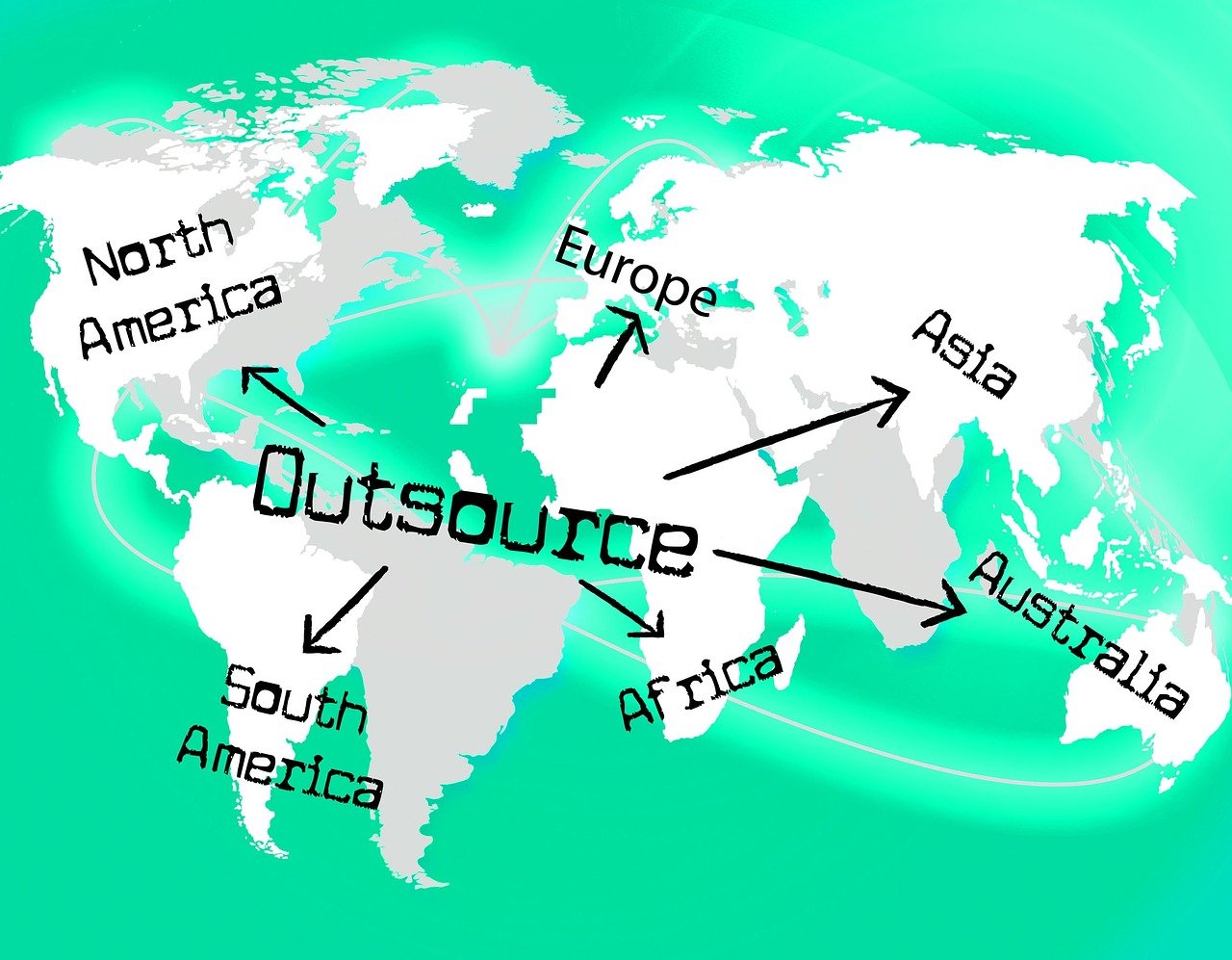Outstaffing vs Outsourcing: A Comprehensive Guide For Business Owners
Companies are always looking for new strategies to stay adaptable and competitive. Outstaffing and outsourcing are both strategies that have made substantial headway in recent years.
You will learn more about outstaffing and outsourcing in this article. This article will analyze the core differences between the outstaffing and outsourcing models, compare their goals., advantages, disadvantaged, and explain what to consider when hiring experts in different countries and the importance of communication.
Click on each corresponding link to jump ahead:
- Outstaffing Model vs Outsourcing Model
- Comparing Goals
- Comparing Advantages
- Comparing Disadvantages
- Hiring Experts in Different Countries
- The Importance of Communication
If you have any questions regarding outstaffing vs outsourcing, contact us.
1. Outstaffing Model vs Outsourcing Model
Outstaffing and outsourcing are two different business models used by companies to fulfill various tasks and functions, often involving the use of external resources. These models have distinct characteristics and purposes:
Outstaffing

- Definition: Outstaffing, also known as staff augmentation or dedicated team model, involves hiring remote professionals or teams through a specialized service provider or agency. These professionals work exclusively for the client company but are not its employees.
- Scope: Outstaffing is often used for specialized tasks or roles that require specific skills or expertise that the client company may not have in-house. It's common in software development, design, or other knowledge-based fields.
- Ownership: The client company has full control and ownership of the outstaffed team's work and tasks. However, the service provider handles administrative and HR-related aspects like payroll and benefits.
- Control: The client company has direct control over the outstaffed team's activities, goals, and processes, similar to managing in-house employees.
- Example: A software development company hiring a team of remote developers through an outstaffing agency to work exclusively on a specific project. However, it's important to note that not all departments should be outstaffed. For example, your sales team should be internally hired as they require a deep understanding of your company's products and services. On the other hand, your marketing team can be outstaffed to an agency to get higher skilled workers and a larger team.
Outsourcing

- Definition: Outsourcing refers to the practice of contracting out specific business processes or functions to a third-party company or service provider. These processes can range from customer support and IT services to manufacturing and payroll processing.
- Scope: Companies typically outsource tasks that are not core to their business operations. This allows them to focus on their core competencies while entrusting non-core functions to specialists.
- Ownership: In outsourcing, the third-party provider takes full responsibility for the tasks and may use its own resources, infrastructure, and personnel to carry them out.
- Control: While the hiring company retains control over the overall goals and outcomes, the day-to-day operations and management of the outsourced function are often in the hands of the service provider.
- Example: A company outsourcing its customer support to a call centre in another country. IT and software development are two areas that are commonly outsourced, but not all departments should be outsourced. To outstaff your IT department and software development, find a reputable outstaffing company and maintain open communication with them.
In summary, outsourcing involves handing over the responsibility for specific functions or processes to a third-party provider, while outstaffing involves hiring external professionals or teams to work exclusively for the client company, often in specialized roles. The choice between outsourcing and outstaffing depends on the nature of the task or function, the level of control required, and the strategic goals of the hiring company.
2. Comparing Goals
Goals of Outstaffing
Outstaffing has its own set of objectives and advantages. Here are the main goals of outstaffing:
- Cost Efficiency: Realize cost savings by reducing overhead costs related to conventional internal hiring. By cutting costs for office space, equipment, and full-time employee pay, this employment approach enables businesses to maximize their budgets and ultimately increase their financial efficiency. However, it's important to ensure that outstaff employees are paid fairly. Fair pay is essential for maintaining a positive relationship with your outstaff employees and ensuring that they are motivated to do their best work.
- Access to Talent: Take use of the world's talent pool to acquire specific skills that may be expensive or hard to come by locally. Utilizing outstaffing allows businesses to gain access to a wide range of knowledge and a global talent network, giving them access to highly qualified experts who can contribute to the success and innovation of projects.
- Scalability: Continually adapt the workforce size to meet changing project and organizational demands. This approach enables enterprises to quickly scale up or reduce their workforces, allowing them to respond to shifting workloads and market conditions while maintaining operational agility.
- Focus on Core Tasks: Employing remote workers for non-core jobs will help you more efficiently allocate internal resources. Outstaffing gives businesses the ability to give priority to their core business operations, freeing up internal teams to work on strategic projects and innovation while specialized duties are delegated to devoted remote workers who are experts in their fields.
These objectives create a strategic framework that enables firms to improve efficiency, streamline processes, and maintain competitiveness in the fast-paced corporate world of today.
Goals of Outsourcing
While both outstaffing and outsourcing share similar goals, outsourcing has its own set of objectives and advantages. Here are the main goals of outsourcing:
- Cost Reduction: Outsourcing aims to reduce operational costs by leveraging the cost advantages offered by third-party service providers. This includes reducing labour costs, minimizing overhead, and optimizing resource allocation.
- Access to Specialized Services: Outsourcing enables businesses to access specialized services and expertise that may not be available in-house. Companies can tap into the provider's domain knowledge and experience to enhance the quality of their outsourced functions.
- Focus on Core Business Functions: Outsourcing allows companies to delegate non-core functions to external partners, freeing up internal resources and management bandwidth. This strategic goal helps organizations concentrate on their core competencies and strategic initiatives.
- Improved Efficiency and Productivity: Outsourcing providers often focus on delivering efficient and productive services. This goal helps companies streamline processes, reduce bottlenecks, and improve overall operational efficiency.
These goals highlight the distinct advantages of outsourcing, emphasizing cost reduction, specialized services, risk management, and scalability, among others. Once again, the choice between outsourcing and outstaffing ultimately depends on the specific business needs and the nature of the tasks or functions to be outsourced.
3. Comparing Advantages

Advantages of Outstaffing
Outstaffing has a number of benefits that make it a desirable choice for companies in a variety of industries:
- Economy. By lowering costs for physical office space, equipment, and full-time staff payment, it provides cost-effective solutions. Organizations can strategically manage resources thanks to its cost-effectiveness, promoting financial optimization.
- Employee control. By employing this tactic, businesses may maintain direct control over distant workers and guarantee that they adhere to corporate values as well as standards. Transparency and efficient project management are promoted by this control.
- Productivity. Access to specialist expertise and committed remote workers improves productivity. This makes it possible to shorten project schedules, produce better products or services, and gain a competitive advantage.
- Time flexibility. This recruiting model gives the freedom to work together across time zones, enabling continuous operations. This versatility guarantees prompt reactions to international business possibilities and needs.
Outstaffing has its own unique set of advantages. Keep in mind that it is important to analyze your specific business needs and the nature of the tasks or functions to be outstaffed.
Advantages of Outsourcing
Outsourcing offers several advantages to businesses, which can vary depending on the specific functions or processes being outsourced and the goals of the organization. Here are some of the main advantages of outsourcing:
- Flexibility: Outsourcing allows companies to respond more effectively to market fluctuations, without the complexities of hiring or laying off in-house staff.
- Risk Mitigation: Outsourcing providers often have robust processes and controls in place to manage operational risks effectively. This can include disaster recovery plans, data security measures, and compliance frameworks.
- Reduced Management Burden: Outsourcing providers handle the day-to-day management of outsourced functions, reducing the administrative burden on internal teams and allowing them to concentrate on value-added tasks.
- Domain Knowledge: Outsourcing partners often specialize in particular industries or functions, bringing valuable domain knowledge and best practices to the table. This expertise can lead to higher-quality outcomes.
It's important for businesses to carefully select outsourcing partners, establish clear communication channels, and monitor performance to maximize these benefits.
4. Comparing Disadvantages
Disadvantages of Outstaffing
Outstaffing has several advantages, but it's also important to think about any potential disadvantages:
- Time zone challenges. Communication delays and synchronization problems might result from leading teams in various time zones. It may be necessary to plan and coordinate meetings carefully to ensure prompt responses.
- Team motivation. It might be difficult to maintain high levels of enthusiasm and morale among distant team members. Physical distance can cause a person to feel alone, so it's important to take proactive measures to promote involvement and a sense of community.
- Communication management. Effective remote team collaboration demands a strong infrastructure and careful management. For ensuring efficient collaboration and project progress tracking, it is crucial to establish clear communication protocols, roles, and duties.
Disadvantages of Outsourcing
just like outstaffing, outsourcing has several advantages, but it's also important to think about the potential disadvantages:
- Reduced Oversight: When a company outsources specific functions or processes, it relinquishes direct control over those activities. This can lead to concerns about the quality of work, adherence to standards, and meeting deadlines, as the outsourcing provider manages day-to-day operations.
- Dependency on Provider: Over time, a company may become heavily reliant on its outsourcing partner. If the provider encounters issues or goes out of business, the company could face disruptions in its operations.
- Data Security: Sharing sensitive data and information with an outsourcing provider can pose security risks. Unauthorized access or data breaches can lead to the exposure of proprietary or confidential information, potentially harming the company's reputation.
It's important for businesses to carefully weigh the advantages and disadvantages of outsourcing and outstaffing and conduct a thorough risk assessment before making a decision. Effective vendor selection, clear contractual agreements, and ongoing performance monitoring can help mitigate many of the potential disadvantages associated with outsourcing and outstaffing.
5. Hiring Experts in Different Countries

Due to distinct cultural, legal, and economic circumstances, these business models are implemented differently in different countries. Let's look at three different cases in order to better grasp these disparities:
United States
The US places a significant focus on remote work and has a developed outstaffing environment. The country provides access to a talent pool that is large and diverse in terms of skills and knowledge. The comparatively high labour expenses in the United States must be taken into consideration, as they may affect the overall cost-effectiveness of this recruiting model.
India
India has become a well-known center for software and IT development, making it a desirable location for hiring expertise. The nation is renowned for its affordable outsourcing services, which provide reasonable pricing for independent experts. Organizations thinking about outsourcing in India should be ready to deal with any linguistic or cultural issues that can come up when working together.
Ukraine
Ukraine is a rising centre for tech talent, drawing attention for its affordable costs and highly qualified workforce. The nation has a sizable pool of IT specialists, making it a desirable option for outsourcing deals. However, firms need to be aware of concerns about Ukraine's political stability since they may affect the long-term viability of hiring partnerships.
Let's sum it up with a table:
6. The Importance of Communication
Effective communication is a crucial component of fruitful employment contracts. To overcome geographic barriers and maintain effective collaboration, organizations must use cutting-edge communication methods and tactics. Important communication techniques include:
Video Conferencing
Face-to-face conversations are made possible by utilizing video conferencing services, which improves the level and transparency of communication. Regular video sessions help remote team members establish rapport and create a sense of community.
Project Management Software
Tracking projects, managing tasks, and sharing documents are all made simple by using project management software. These technologies help teams work together efficiently, keep track of development, and guarantee that project goals are being met.
Scheduled Meetings
All stakeholders are kept up to date and encouraged to communicate regularly by establishing a structured meeting schedule that includes team meetings, one-on-one check-ins, and project updates.
Final Thoughts
Outstaffing and outsourcing are powerful tactics for maximizing operational expenses, gaining access to people around the world, and raising productivity. Despite the fact that they have many advantages, their implementation requires careful partner selection, an awareness of the difficulties, and customized techniques. When applied properly, these strategies can change an organization's competitive advantage, promoting growth in the fast-paced IT industry. A company's full potential in the international arena can be unlocked by accepting outstaffing and outsourcing, which will spur success and innovation.
When considering outstaffing or outsourcing, it's important to carefully select a partner that has the skills and experience required to meet your needs. It's also important to agree on communication modes and maintain an open communication channel with the outstaffing or outsourcing company. By doing so, you can ensure that your business benefits from the advantages of outstaffing and outsourcing while minimizing the risks and difficulties associated with these strategies.

